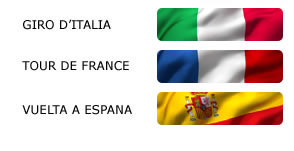

Halfway point for the pink race, which will face the simplest stage among those scheduled. The 120 km from Mirano to Monselice are completely flat, with a final circuit of 14 km to be repeated twice on wide roads. A sprint finish is more than expected.
to follow the live coverage of the entire stage starting from 11:40 CLICK HERE
TERRITORY. The proposed route for the fifth stage of the Giro Women 2025 is a track for fast wheels. But once again, the Veneto region, where the entire day unfolds, compels one to slow down and appreciate the artistic and environmental treasures that draw applause.
A feast of great beauty begins even before the start flag drops in Mirano, a town proud to show the world it is much more than a strategic location to visit Venice or Treviso, all within less than 30 km. Just visit the Cathedral dedicated to San Michele Arcangelo, with its seventeenth-century appearance, where one can admire, among others, a masterpiece by Giambattista Tiepolo, the altarpiece of the "Miracle of Saint Anthony Reattaching the Foot" and a fresco of the "Universal Judgment" by Giovanni De Min, one of the happiest moments of nineteenth-century Venetian painting. Near the center, the public parks of Belvedere and Morosini-XXV Aprile deserve a brief walk, a first example of the sumptuous residences encountered a few kilometers ahead, when the race meets the Riviera del Brenta.
In Mira, there are at least two mansions to visit: Villa Valmarana with its magnificent seventeenth-century Barchessa and Villa Widmann, one of the best-preserved on the Riviera del Brenta, striking for its splendid interiors with mythological-themed frescoes and gardens "populated" by classical deity statues sometimes hidden by vegetation. In Mira's territory, Villa Valier with its Barchessa and seventeenth-century chapel, the sixteenth-century Villa Querini reflecting in the Brenta since the XVI century, and the sumptuous Villa Foscari, known as "La Malcontenta", the only residence built by Palladio in the Venice province, stand out. In the subsequent Dolo, the eighteenth-century Villa Badoer Fattoretto is chosen, hosting the original Museo del Villano: a collection of about 20,000 utensils and artifacts that tells the local peasant culture, along with tower and bell tower clocks, wind and string musical instruments, carriages and coaches.
With eyes still full of the splendors of the Villas of Brenta, the group speeds towards Monselice, the stage finish location. But before competing for the stage victory, the athletes will face a circuit that extends into the Euganean Hills Regional Park, passing through Arquà Petrarca, the best-preserved medieval village in the area, where a visit to Petrarca's House, where the poet spent his last years, is a must.
Finally, Monselice, a fascinating fortified city that deserves an in-depth visit starting from the Civic Tower (or Clock Tower). From here begins the Sanctuary Way, winding along the slopes of Rocca Hill, allowing continuous admiration of extraordinary places. Nearby stand the Castle, an early medieval fortress renovated and expanded between the thirteenth and fifteenth centuries, Villa Nani with its scenic staircase surrounded by statues, the Santa Giustina Parish Church erected in the mid-thirteenth century, and, beyond the Roman Gate or Holy Gate, the Jubilee Sanctuary of the Seven Churches, a sacred path created in the seventeenth century.

Se sei giá nostro utente esegui il login altrimenti registrati.